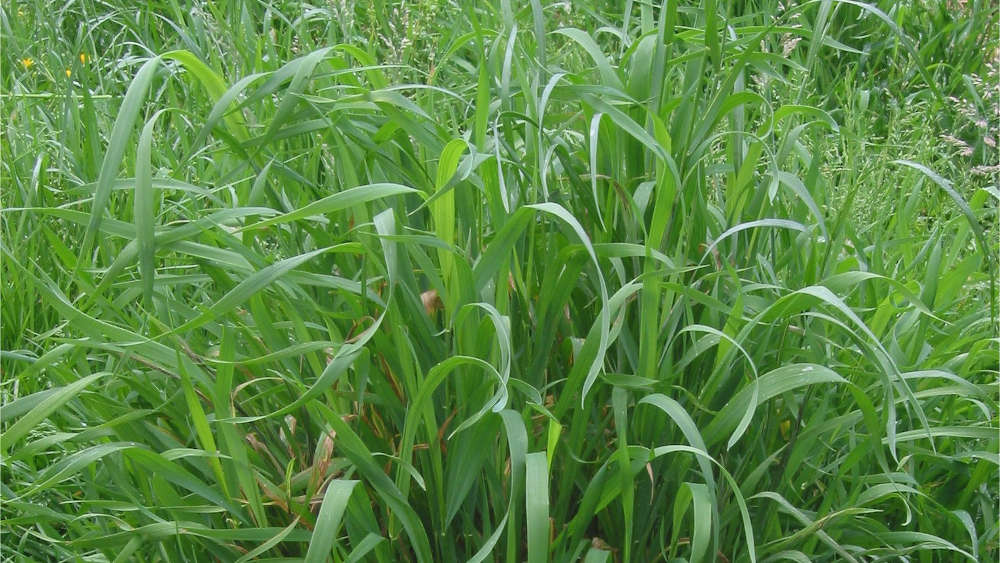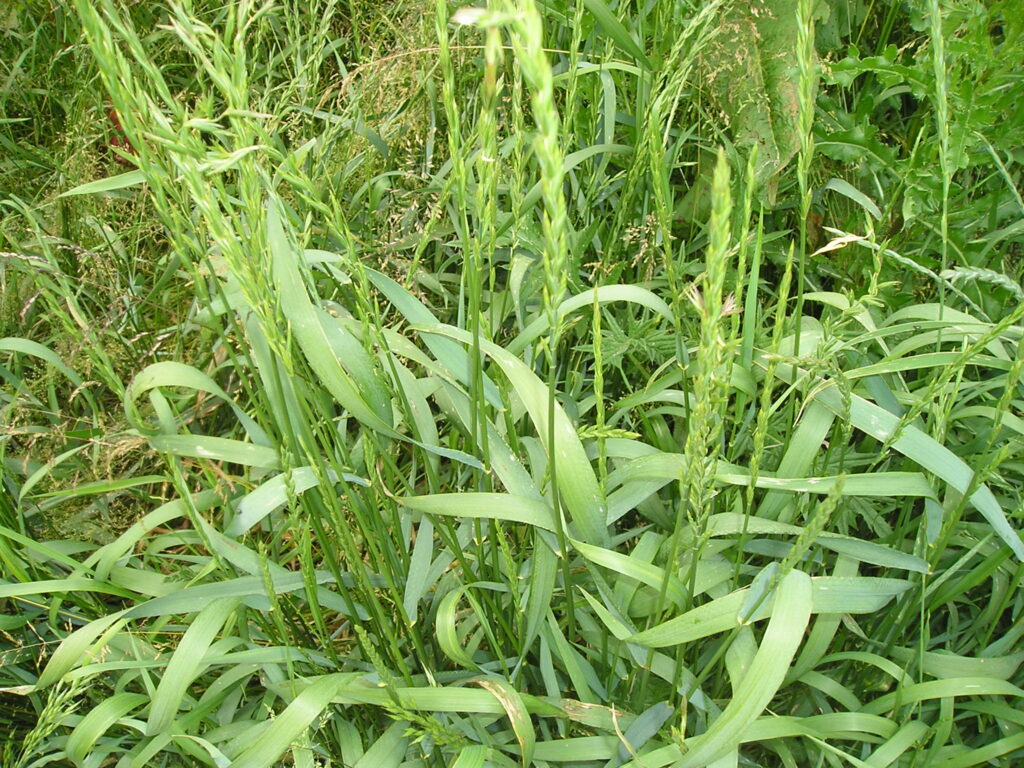Couch Grass, scientifically known as Elymus repens, is a persistent and invasive perennial grass species that poses challenges for gardeners and land managers across Europe, including the United Kingdom. While Couch Grass offers some ecological benefits and adaptability, its aggressive spreading habit and resilience make it a troublesome and common weed in various environments. In this comprehensive article, we will explore the anatomy, growth habits, ecological impacts, control methods, and specific challenges Couch Grass presents to gardeners and landowners.
Anatomy and Growth Habits
Couch Grass, also known as Elymus repens, is a perennial grass species that belongs to the Poaceae family. It is characterised by its long, flat, blade-like leaves and dense tufts of foliage above the ground. The leaves are hairy, giving them a rough texture. Couch Grass spreads through an extensive network of white rhizomes, underground stems that allow the plant to reproduce vegetatively. These rhizomes can quickly colonise new areas, making Couch Grass difficult to eradicate. Additionally, the grass produces creeping shoots, called stolons, which help it spread horizontally across the ground.

Ecological Impacts
Couch Grass has significant ecological impacts, particularly when it invades natural habitats or arable land. In natural environments, it can outcompete native plant species, reducing biodiversity and altering ecosystem dynamics. The dense growth of Couch Grass creates a thick canopy that shades out other plants, depriving them of light and resources. As a result, native plants struggle to survive, and their populations decline. In arable land, Couch Grass competes with crops for nutrients, water, and light, leading to reduced yields and economic losses for farmers. The ability of Couch Grass to establish and spread in disturbed areas, such as waste grounds or garden borders, contributes to its invasive nature and the difficulties it presents to gardeners and land managers.
Control Methods
Controlling Couch Grass requires a multi-faceted approach that combines different strategies to effectively manage its growth and spread. Here are some key methods employed by gardeners and landowners:
Mechanical Control
Manual removal is a common method for controlling Couch Grass. It involves digging out the entire plant, including the roots and rhizomes, to prevent regrowth. Heavy infestations may require repeated treatments over time to exhaust the plant’s energy reserves. Regular cultivation, particularly in spring and autumn, can also disrupt the growth of Couch Grass and expose rhizomes for easier removal.
Cultural Control
Cultural practices play a vital role in preventing and managing Couch Grass infestations. Maintaining healthy soil through proper drainage, improving soil structure, and ensuring optimal fertility can help minimise the establishment and spread of Couch Grass. Gardeners should also avoid soil compaction, as compacted soil provides an ideal environment for the weed to thrive. Additionally, practicing good garden hygiene, such as removing plant debris and strimmed weeds promptly, reduces the availability of Couch Grass rhizomes and seeds for new infestations.
Chemical Control
Selective herbicides are commonly used to control Couch Grass. Systemic herbicides containing glyphosate, a broad-spectrum herbicide, can effectively target and kill Couch Grass. These herbicides are typically applied to the foliage and translocate to the roots, ensuring complete eradication. Care must be taken when using herbicides near desirable garden plants, as glyphosate is non-selective and can harm other vegetation. It is important to carefully read and follow the instructions provided by the manufacturer when using herbicides.
Mulching and Smothering
Mulching with organic materials, such as wood chips or straw, can help suppress the growth of Couch Grass. Applying a thick layer of mulch around garden plants can smother the weed, preventing it from receiving sunlight and impeding its growth. Regularly replenishing the mulch layer is necessary to maintain its effectiveness. Smothering the weed with landscape fabric or plastic sheeting is another option, but this method requires careful monitoring to ensure that Couch Grass does not find a way to emerge from beneath the cover.
Physical Barriers
Installing physical barriers can be an effective long-term strategy for containing Couch Grass. These barriers can be made of impermeable materials or specifically designed root barriers that extend below the soil surface. The purpose of these barriers is to prevent the rhizomes from escaping and spreading further. However, regular monitoring and maintenance are essential to ensure that Couch Grass does not find alternative routes over or around the barriers.

Challenges and Best Practices for Gardeners
Gardeners face specific challenges when dealing with Couch Grass, particularly in garden environments where the weed can quickly invade flower beds, lawns, and other cultivated areas. Here are some best practices to consider:
- Early Detection and Vigilance: Regular inspections of the garden are crucial for early detection of Couch Grass infestations. Prompt action improves the chances of successful control and prevents the weed from establishing deep-rooted infestations. Gardeners should be vigilant and act swiftly when they spot any signs of Couch Grass growth.
- Targeted Treatments: Applying herbicides or employing manual removal methods directly to Couch Grass-infested areas ensures more effective control while minimising damage to desirable garden plants. It is essential to focus on treating the problem areas without spreading the weed to other parts of the garden.
- Prevention and Maintenance: Preventing the spread of Couch Grass within the garden is crucial. Tools, equipment, and footwear should be cleaned thoroughly after working in infested areas to avoid unintentional transfer of rhizomes. Maintaining good garden hygiene, such as removing plant debris and strimmed weeds promptly, reduces the availability of Couch Grass rhizomes and seeds for new infestations.
Conclusion
Couch Grass, or Elymus repens, is an adaptive perennial grass that presents significant challenges for gardeners and land managers. Its invasive nature, resilient growth habits, and ability to quickly colonise new areas make it a persistent weed. Employing a combination of mechanical, cultural, chemical, and physical control methods is key to managing Couch Grass effectively. By understanding its anatomy, growth habits, ecological impacts, and employing best practices, gardeners can minimise the weed’s impact and maintain healthy, thriving garden environments. Stay vigilant, implement appropriate control measures, and prioritise prevention to keep Couch Grass at bay and preserve the beauty of your garden.

Faye is a valuable contributor at Glenlivet Wildlife, with a degree in Botany and expertise in plants and flowers. She has embarked on expeditions to remote areas, interviewing renowned botanists and biologists to provide unique insights into flora worldwide. Her favourite flower is the Jade Vine, admired for its beautiful colour and delicate appearance.
